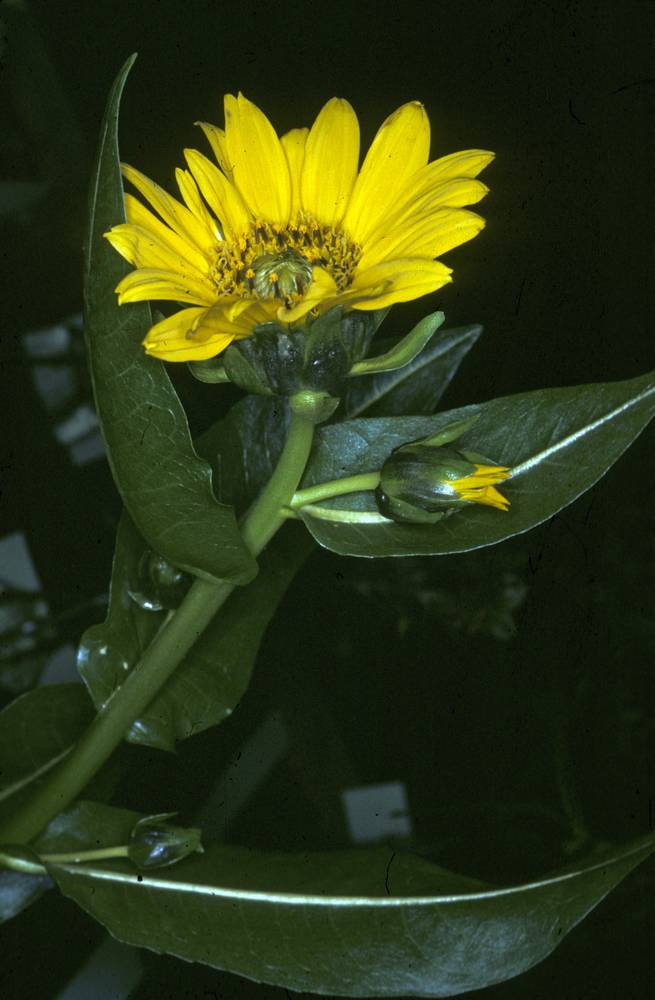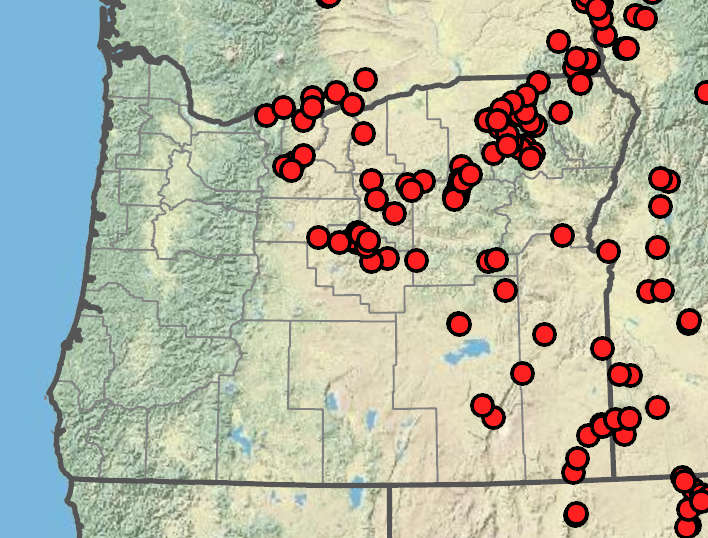Wyethia amplexicaulis
Wyethia mollis
northern mule's ears
woolly mule's ears
erect; (15)30–62 cm, with sessile glands.
erect, 30–72 cm.
elliptic to oblanceolate, rarely lanceolate; (18)22–46 × 3.6–12 cm, tapering to both ends;
margins entire to remotely toothed;
surfaces glabrous, often shiny with resin;
petioles 0–16 cm.
ovate-lanceolate to obovate-oblanceolate, 18–32.5 × 5.5–15.3 cm, sometimes ± decurrent;
margins entire;
surfaces tomentose, becoming glabrate;
petioles 10.5–19 cm.
blades lanceolate to elliptic, 7–21 × 1.8–6 cm;
margins entire, sessile.
ovate-lanceolate to obovate-oblanceolate, 5–21 × 2–7.5 cm;
petioles 0.5–8.6 cm.
terminal heads 1; larger; axillary heads 2–5; smaller;
peduncles 0.2–7.5 cm.
terminal heads 1; larger; axillary heads 0–3, sometimes reduced;
peduncles 1.9–5 cm.
terminal 20–35 × 20–25 mm; axillary 12–21 × 11–20 mm.
terminal 17–30 × 10–20 mm; axillary 15–25 × 10–15 mm.
larger heads 11–21; smaller heads 7–15, yellow;
rays 22–44 × 5–13 mm.
larger heads 8–13; smaller heads 7–10, yellow;
rays 20–35 × 6–9 mm.
9–11 mm.
~9 mm.
ovate-lanceolate to lanceolate, 16–30 × 4–12 mm;
surfaces glabrous, not ciliate.
ovate-lanceolate to lanceolate, 17–34 × 5–10 mm;
surfaces tomentose, not ciliate.
7–8 × 1.3 mm, glabrous;
pappus scales ovate, 1–2 mm; crowns 0.5–1 mm.
9–12 × 1.5–2 mm, loosely villous;
pappus scales subulate, 1–3, 2–3 mm, ciliate; crowns 0.3–1 mm.
15–18 mm.
15–18 mm.
Wyethia amplexicaulis
Wyethia mollis
Dry, open areas. Flowering May–Jul. 100–2300 m. BR, BW, Col, Owy. ID, NV, WA; southeast to CO. Native.
Wyethia amplexicaulis generally grows in drier areas than does W. helianthoides, but the two species form the hybrid W. × cusickii where they meet. “Amplexicaulis” refers to the cauline leaves, which are generally sessile and more or less clasp the stem.
Grassy areas. Flowering Jun–Aug. 1300–2000 m. BR, ECas. CA, NV. Native.
“Mollis” means soft, in reference to the hairs.
Abigail (Abby) Moore
Abigail (Abby) Moore





